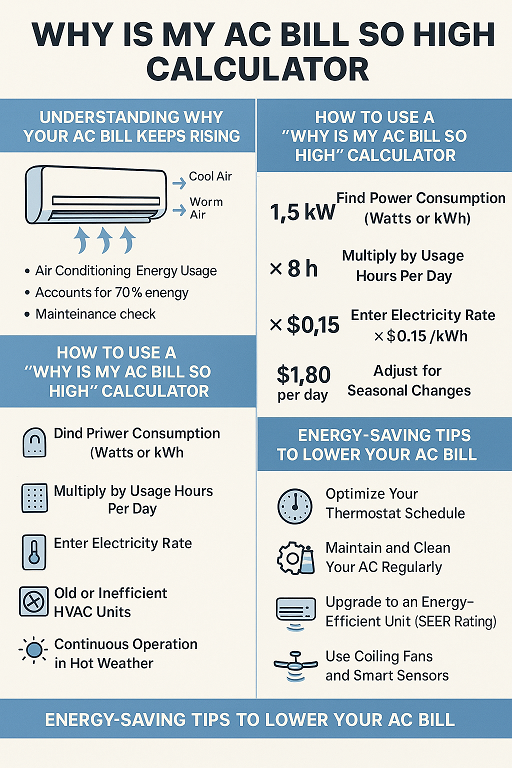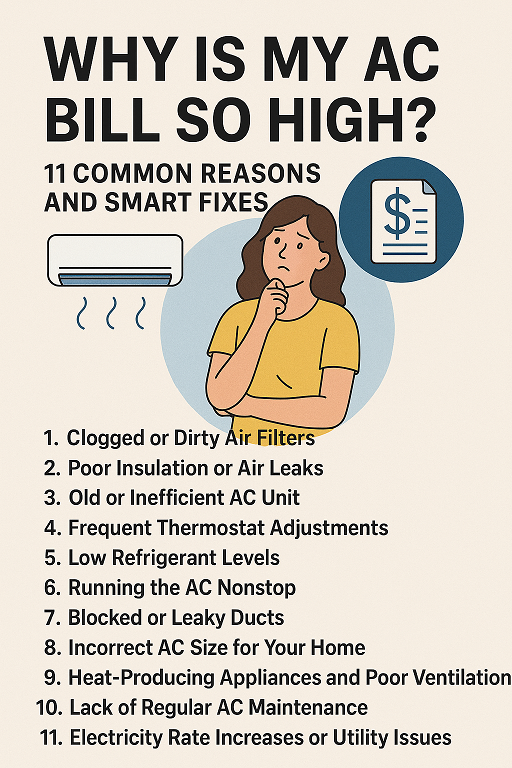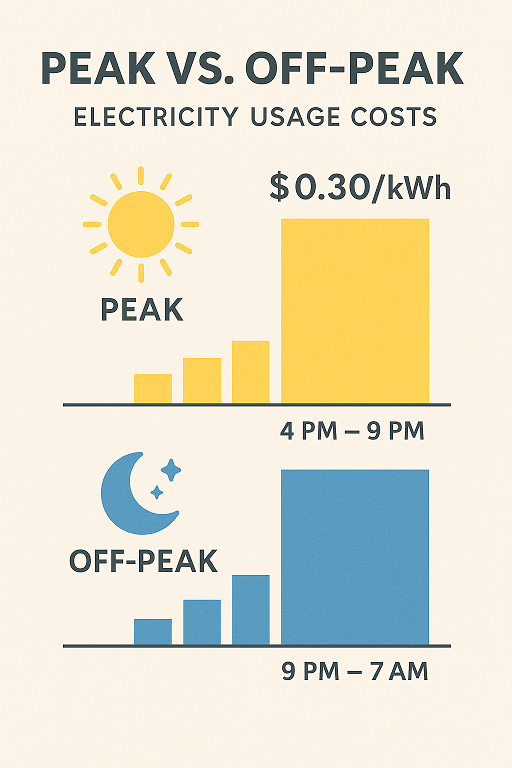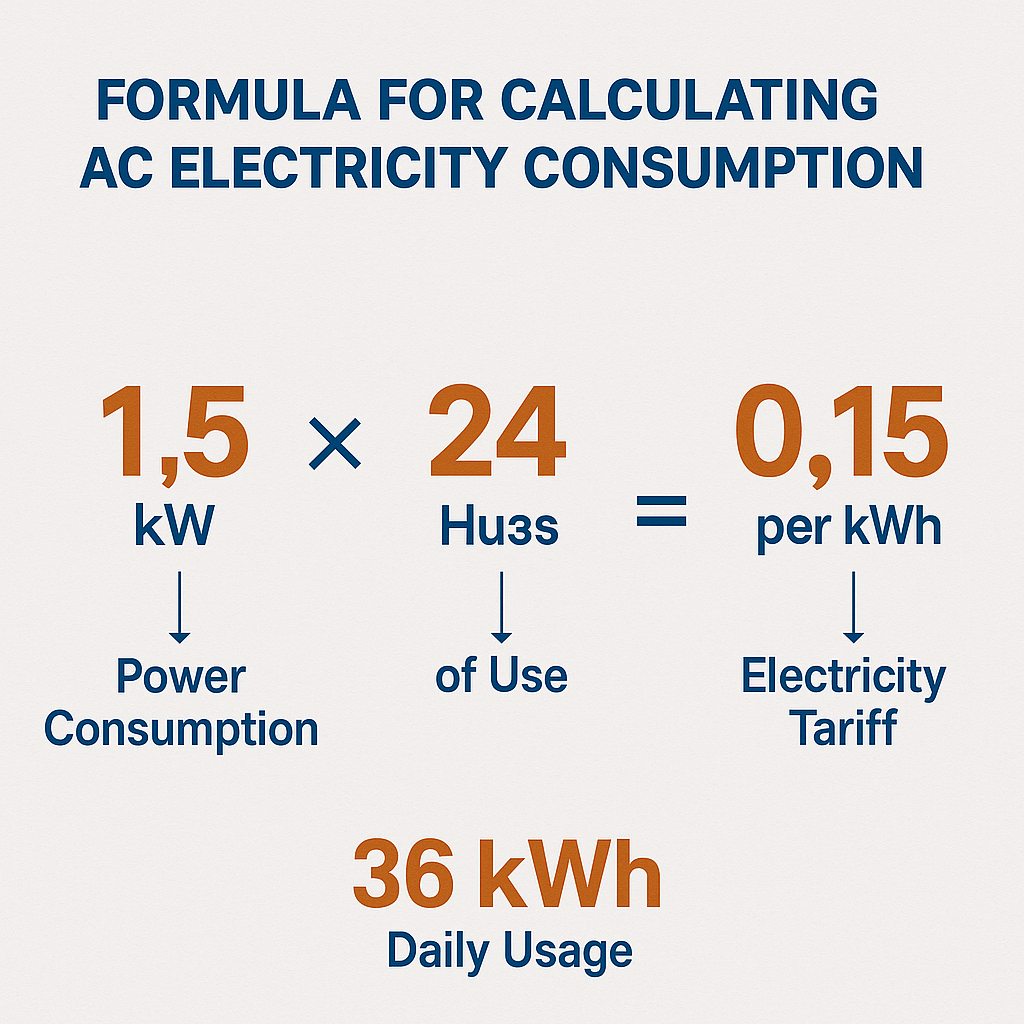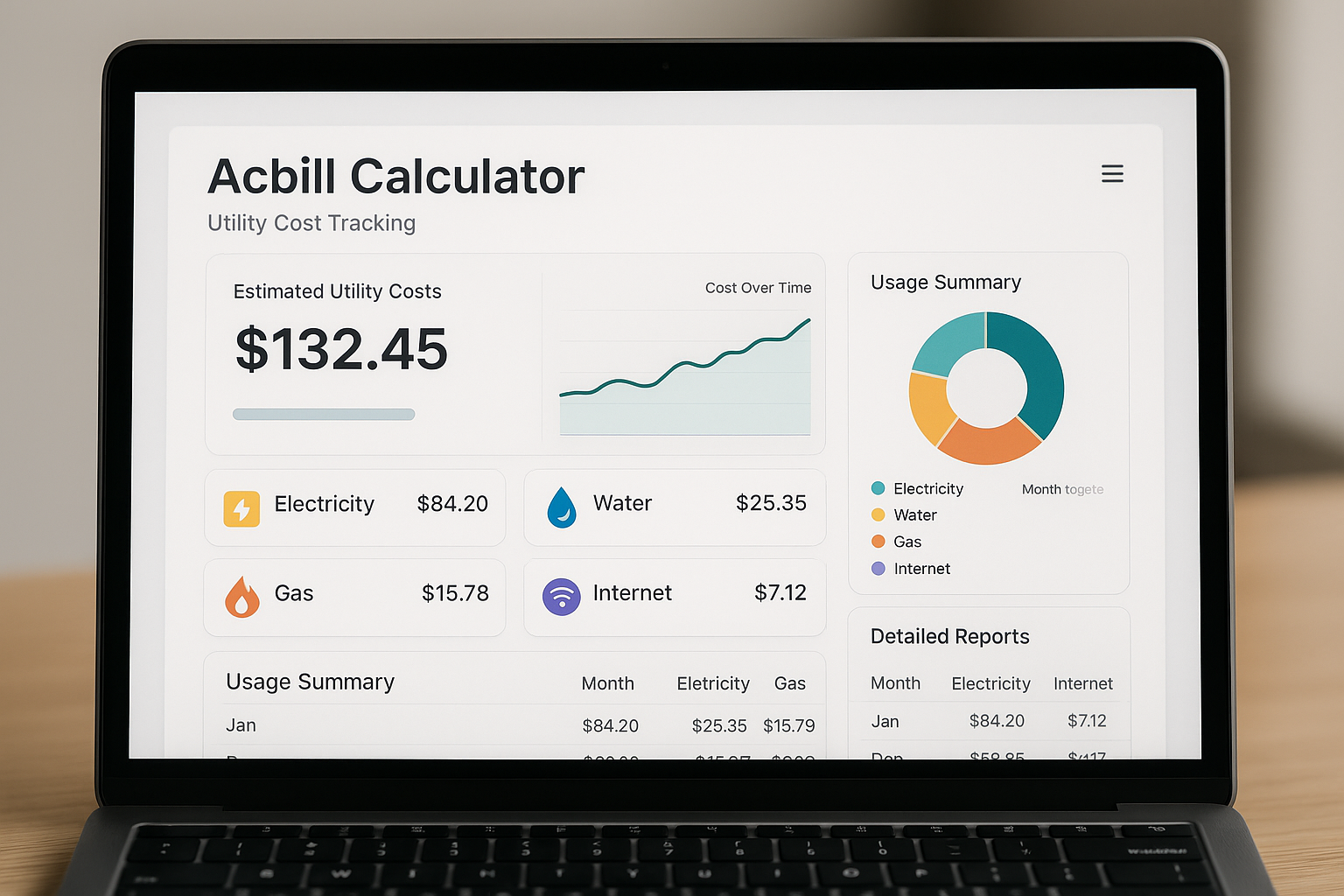![Can Solar Offset Your AC Electricity Cost? [Proven Math + ROI Timeline]](https://acbillpro.com/storage/blog-images/JHVWytIF9R1t96Wq4kToKY4dLqxMqGd4mj2MXclF.jpg)
Can Solar Offset Your AC Electricity Cost? [Proven Math + ROI Timeline]
Can Solar Offset Your AC Electricity Cost? [Proven Math + ROI Timeline]
Air conditioning keeps us cool during the summer, but it also uses up a lot of electricity. In fact, the average U.S. household uses 12 to 17 percent of its energy for cooling. In homes located in hot climates (Texas, Arizona, and Florida), this percentage can be even higher.
Now here is the big question: Will solar can your AC electricity cost.
Is it possible that solar could pay a huge part of your air conditioning bill or even all of it? The answer is yes. However, the real savings on it hinges on three main factors:
- What is the size of your PV system (the amount of solar you put in)?
- Net-metering math (how can you use excess solar credit)
- ROI schedule (how fast savings are greater after overhead expenditures)
So, we can now get to the maths and examples and real-life scenarios to see whether solar would be an ideal fix to your AC bills.
Understanding the Connection Between Solar Power and AC Usage
How Much Electricity Does an Average AC Unit Consume?
A central air conditioner typically uses 2,000 to 3,500 watts of electricity per hour, depending on the size and efficiency of the air conditioning system. This means that during the heating season, it consumes 1,500 to 2,500 kWh of electricity.
To put that in perspective:
- In summer, running a 3-ton AC system 6 hours a day can use up almost 1,080 kWh a month.
- At the average electricity cost of 0.15 premiums per kWh, that is approximately 162 dollars a month used just in cooling.
Seasonal Impact: Summer Cooling Loads vs. Solar Generation
The good news is that solar panels produce the most power during the long summer days or when the demand for AC is highest. This effect of nature makes solar power one of the most effective methods to combat the rising cooling bills.
Depending on your state's net metering policy, you may need to store excess solar energy credits in the spring or fall to offset your shoulder season AC load.
How Solar Panels Offset Your AC Electricity Bills
The Science Behind Solar Offset AC Cost
Solar offset simply means that you will be able to generate enough electricity (using PV) to match the amount of electricity your AC uses. Let's say your AC consumes 2000 kWh of electricity in the summer and your solar power is able to generate the same. Now you have 100% offset on your cooling costs.
Peak Sun Hours vs. Peak AC Usage Hours
Here’s the challenge:
- The highest amounts of solar energy occur at noon (10 a.m. -4 p.m)
- AC normally reaches a peak in the late afternoon/evening (3 p.m.9 p.m.)
It is in this discrepancy that the net metering or battery storage would play a crucial role You will not be able to instantly counteract your evening air conditioning expenses without them.
Net Metering: Banking Excess Power for AC Demand
The excess solar energy during the afternoon is credited to your account through net metering. Then, you can use that credit when you run your AC at the end of the day. This is why solar power is an ideal companion for air conditioners in hot weather.
PV Sizing: Matching Solar Capacity to Your AC Needs
Calculating Solar Array Size for Residential Air Conditioning
To determine how many solar panels to install in order to power your ACs, you must know:
- Consumption (kWh) – E.g. A 3-ton AC 1,500 kWh summer.
- Local Solar Production Factor- this can apply to different locations For instance:
- Arizona: ~1,700 kWh/ year / kW installed
- Texas: ~1,500 kWh / year/kW installed
- New-York: ~1,200 kWh/year kW installed
- System Size Formula:
Example:
At an annual AC load = 1,800 kWh/year, and the output of solar in your area of 1,500 kWh/kW/year, you’d need:
1,800÷1,500=1.2 kW1,800 \div 1,500 = 1.2 \, kW1,800÷1,500=1.2kW
That is only 3-4 panels to cover your AC usage! Of course, most homeowners are purchasing systems big enough to serve the needs of the whole house, not just cooling.
The Role of Inverters and System Efficiency
Solar panels do not survive on their own. Inverter efficiency (typically 95-98 percent) and system losses (wiring, shading, temperature effects) will further reduce output. It is not uncommon to oversize the array by 10-15% to ensure the AC is fully offset.
Case Study: Solar System Sizing for a 3-Ton AC Unit
- Load: 2,000 kWh/ summer
- Texas (1,500 kWh/kW/year)
- Required System: 1.3 kW (~ 4 panels)
- Installed Cost per Watt: ~2.75/W
- The Total Cost is ~$3,575 (pre-incentives)
This means that with the current 30% federal tax credit you are only paying $2,500 after taxes. If it saves $250/year on AC this year, the payback time is about 10 years - and the panels will last 25+ years.
Net-Metering Math: How Credits Work Against AC Bills
Time-of-Use Rates and Their Impact on Solar Value
TOU rates are now charged by many utilities. That means:
- Daytime solar exports could be credited at a different, reduced rate.
- Using appliances via the AC at night could prove more expensive.
In numerous states solar and batteries are being combined within California as well to maximize AC offset potential under TOU pricing.
Example Calculation: Offsetting 1,500 kWh of Cooling per Summer
Let’s assume:
- The CV load is equal to 1,500 kWh
- The electricity rate is = 0.18/kWh
- Yearly AC expenditure = 270
- Solar output generated = 1500 kWh/ annum
An example is if your net metering pattern is 1:1 credit; this means your AC bill is zero. Let's say, with a discount of $0.12/kWh, you save 67% on your costs.
ROI Timeline: When Does Solar Pay Back Your Cooling Costs?
Upfront Solar Installation Costs vs. Monthly AC Savings
- Average? U.S. solar system cost: $15,000 (6 kW, after incentives)
- Mean AC emissions offset: 250-600 dollars/year on average based on climate
- Depending on how much solar is put on your house, AC offset becomes an enlargement of a more comprehensive ROI.
Break-Even Point and Long-Term Financial Benefits
- Repayment Schedule: 7 to10 years within most states
- Lifetime Savings:Between 20,000 and 30,000 over 25 years
- The savings of the AC alone might not compensate the system, but it forms a significant part of quicker ROI.
Incentives, Tax Credits, and Rebates That Shorten Payback
Key incentives that directly reduce solar costs:
- Federal Solar Investment Tax Credit (30% off)
- State Level Rebates (CA MA NJ NY TX have good prog)
- Utility solar incentives (net metering and/or performance based credits)
When combined, many homeowners reach ROI in 6–8 years.
Real-World Examples of Solar Offsetting AC Electricity Costs
Suburban Home in Texas
- The amount of AC usage during summer is 3,000 kWh AC per summer
- The 6 kW solar system will generate ~9,000kWh/year
- Fully covers AC at full loads other house loads
Desert Climate in Arizona
- Large cooling load: 4,000 kWh cooling/summer
- The 8 kW solar system compensates ~12, 000 kWh/year.
- AC + pool pump electric bills
Moderate Climate in California
- ATC use 1,000 kWh a summer only
- A 3 kW solar system covers total consumption of the household +AC
- TOU bill savings shortened by OI
Benefits Beyond Just AC Savings
Reduced Carbon Footprint
One kWh of solar avoids approximate 0.9 lbs CO 2. Offsetting 2 kWh of AC saves ~0.51 ton of CO 2 a year.
Increased Home Resale Value
The benefits of solar homes fuel their sales 3-5% higher than non-solar ones based on a Zillow research.
Energy Independence and Resilience
Battery storage that is coupled with solar guarantees that you have the AC up in the event of a grid outage.
Common Challenges and Misconceptions
Do Solar Panels Work at Night When AC is Running?
And solar does not produce at nights. If you have net metering credits or a battery, then you can still cover evening A/C loads.
The Myth of 100% AC Offset Year-Round
Production of solar also varies with season Whereas summer AC loads are a good match to solar, a winter may yield excessive credits to counter annual use
FAQs About Solar Offset AC Cost
Q1- What is the number of solar panels required to run AC?
A 3-ton AC takes between 3-6 solar panels to run cool loads during a summer day, depending on location.
Q2: Is solar able to offset central AC and mini-splits?
Yes. Either system can be covered with sized solar Mini-splits are more energy-efficient, and so they need less panels than full-size ones do.
Q3 What happens when AC is set at night time--how can we help solar?
Solar credit (through net metering) or batteries help to power the AC during the night hours.
Q4:What is the time that the solar takes to pay for AC savings?
Payback is realized in 7-10 years by most homeowners and the AC offset is included in the overall ROI.
Q5 Do we need net metering to recover AC charges?
Not a must but very useful. In its absence, solar offset does not work too well on AC unless it is coupled with a battery.
Q6 Is there the possibility of battery covering the night AC loads?
But batteries raise initial costs. The greatest value is in states that have TOU-based rates or frequent losses.
Conclusion: Is Solar the Smartest Way to Offset AC Costs?
Does it seem possible to offset your AC electricity costs with solar power?
Absolutely. With the right system sizing, convenient net metering, and incentives, solar power can significantly reduce or offset your cooling costs in the summer.
